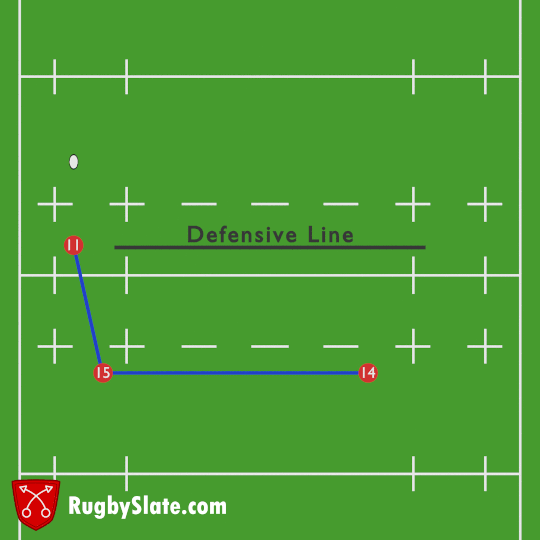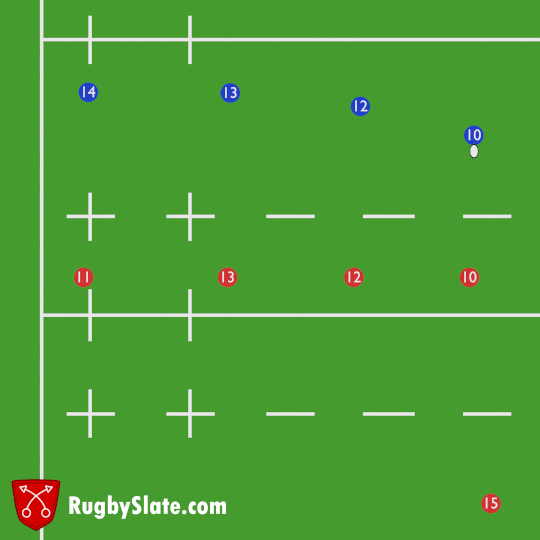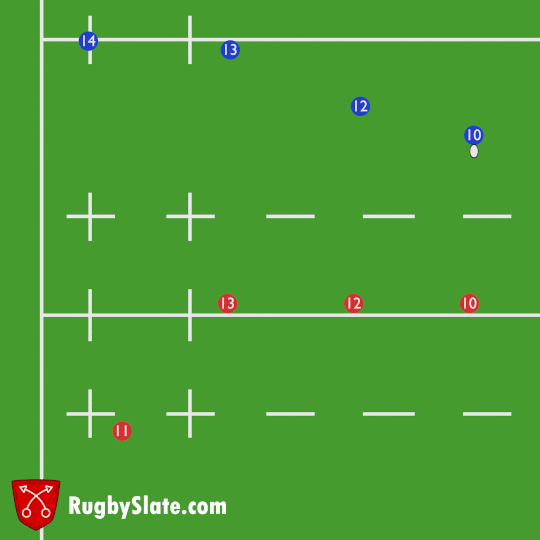Back Three Defence – Pendulum
The wingers and fullback form the back three and in defence they work together to cover the back field, covering the space behind the defencive line. This backfield defence firstly covers the space to stop the opposition from kicking through and being able to regain possession of the ball. Secondly by covering the back field if there is a break through the line, at least one of the back three should be able to get to the break and make a tackle. Even though this backfield defence is typically undertaken by the back three, there will be times when one of the three are caught up in the play and therefore another player will have to help out with the covering defence, this typically will be the scrumhalf or sometimes the flyhalf.
Shown above is a very basic view of what is called the “pendulum”, it is how the back three should work together and shift around the field depending on where the ball is. When the ball is on one side of the pitch, the winger on that side must come up, join the defensive line and mark their opposition winger. This leaves a gap in behind the winger where a kick would be very dangerous, therefore the 15 must shift across to cover this space. This in turn leave a gap towards the center of the field which means that the winger on the otherside of the pitch must shift across to cover this gap. The opposite is true when the ball goes to the otherside of the field.
To understand where exactly the back three should be, it is best to understand what they are trying to cover and what could happen if they are out of position. Below are some examples of this:





